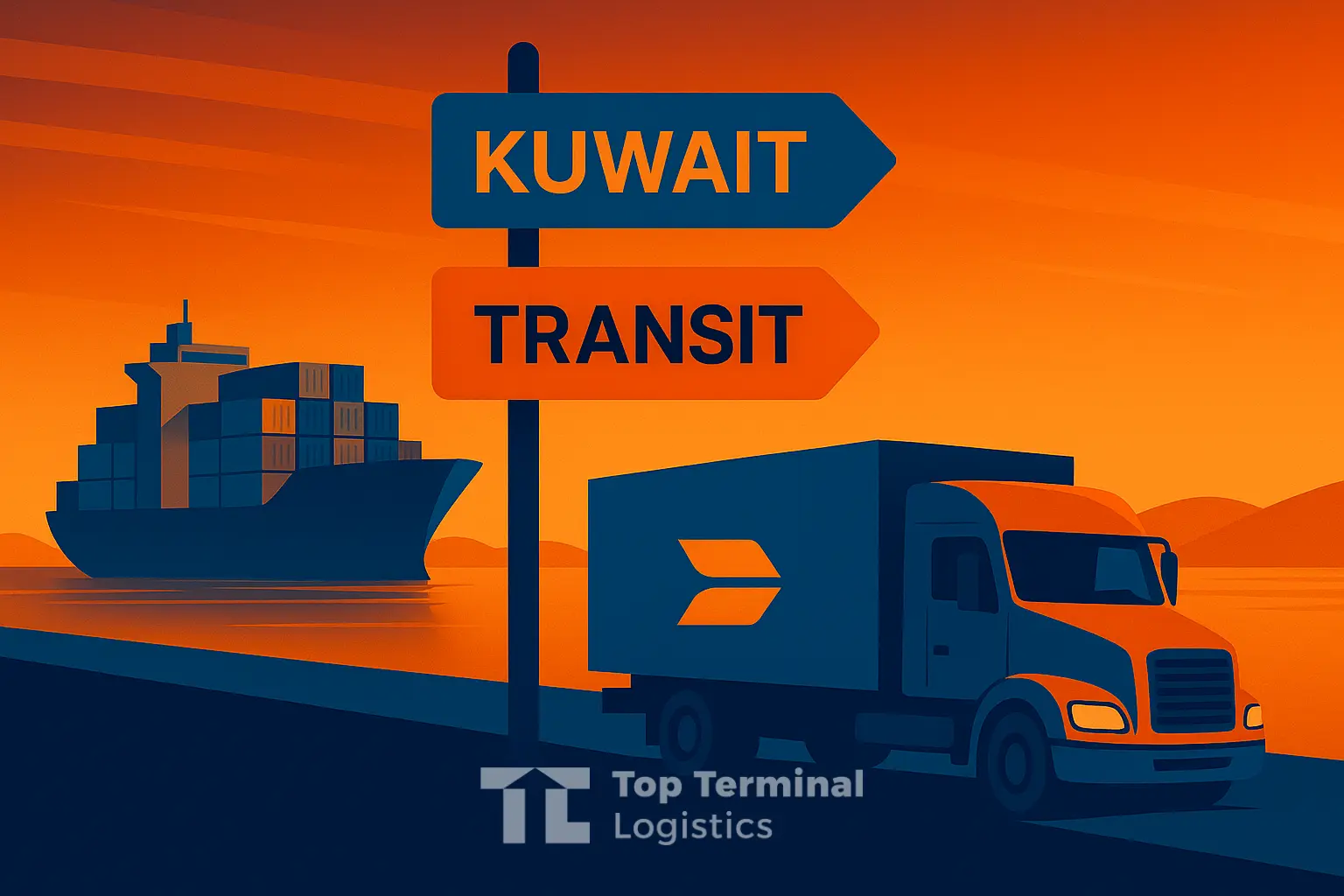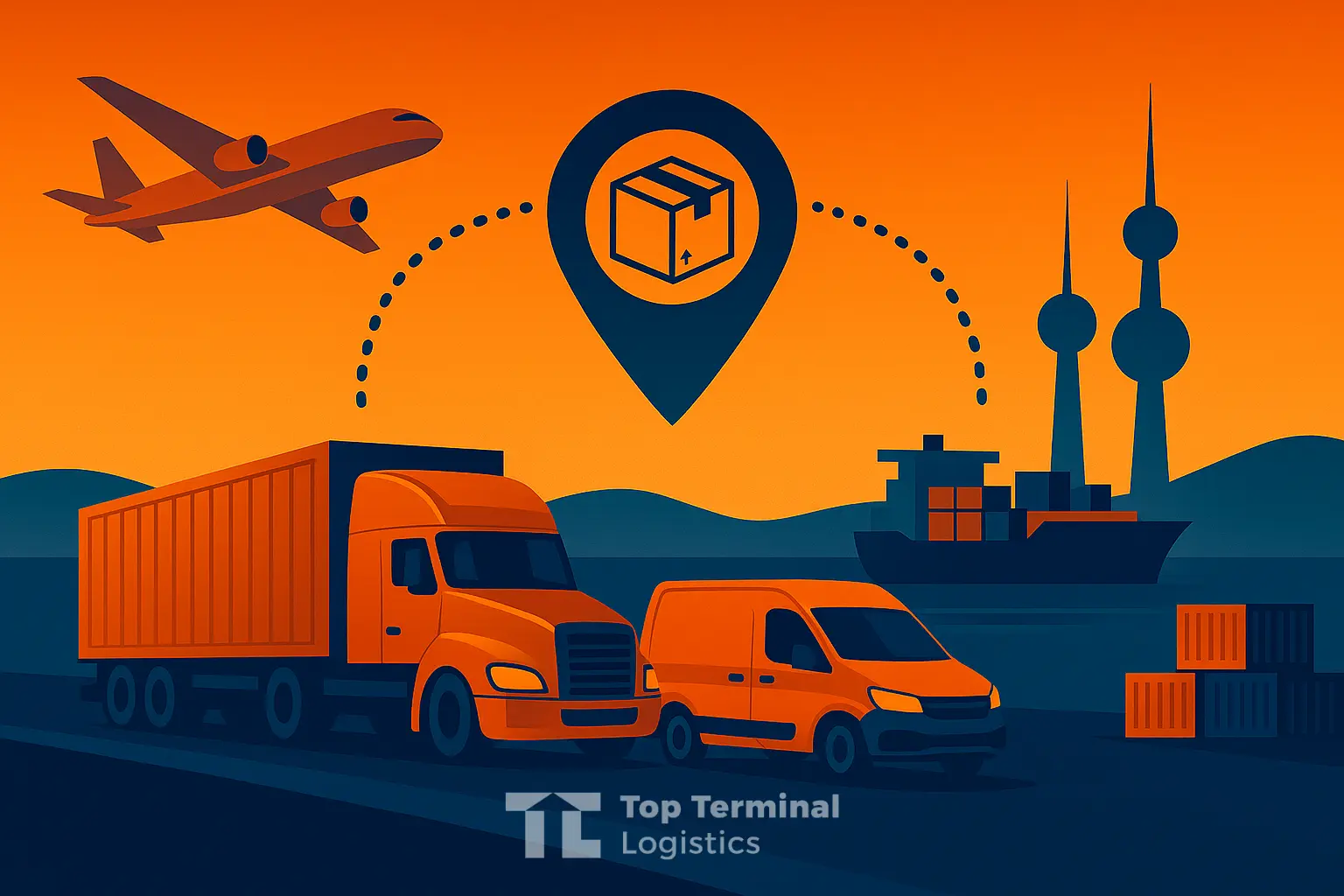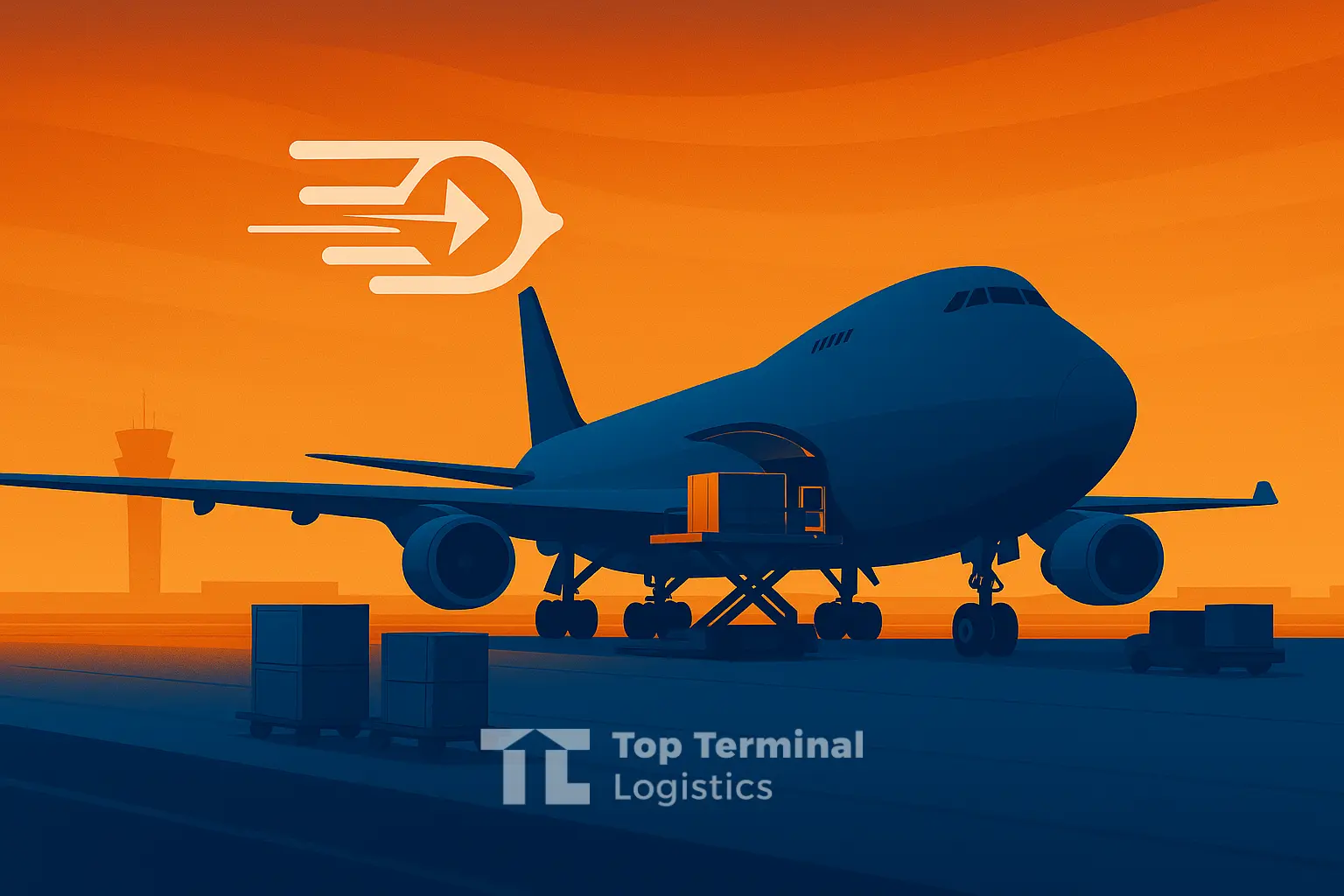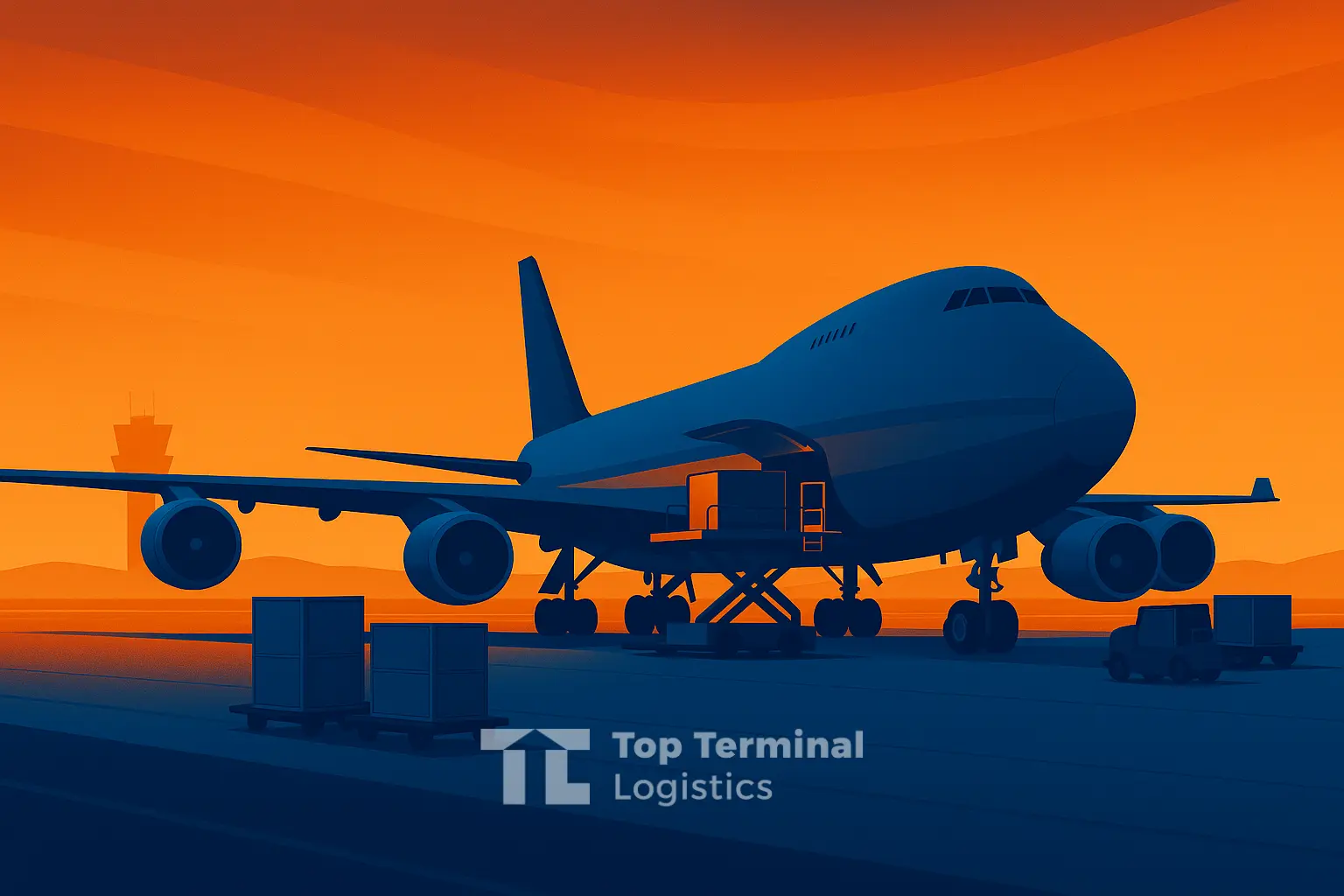International Freight Forwarding in Kuwait – Transit Explained & Picking the Right Partner
If you import, export, or move transit cargo through Kuwait to GCC and beyond, you need a forwarder who gets the logistics plan right, files data cleanly, and navigates customs without delays. This guide covers Transit vs. Transshipment vs. Re-export, how to choose a forwarder, core documents (Commercial Invoice, Packing List, COO, transport document), plus local notes on Kuwait platforms and GCC regulations.
Transit vs. Transshipment vs. Re-export
- Transit: Goods move bonded across Kuwait from an entry to an exit point (road/sea/air) without entering local market; supported by road regimes like TIR where applicable.
- Transshipment: Container/cargo shifts between vessels or transport modes inside the same port/terminal under customs control.
- Re-export: Goods are imported (may incur controls/fees) then exported later—often after storage or light handling.
The right path depends on your lane, lead time, commodity, and value-add step—directly affecting cost and paperwork.
Kuwait Logistics Snapshot (2025)
- Ports: Shuaiba remains the key industrial port for general cargo/heavy equipment/raw materials; Shuwaikh is a main gateway for commercial cargo.
- Customs e-Platforms: Unified digital services streamline declarations, payments, and visibility.
- GCC Common External Tariff: GCC customs union applies a common tariff (often ~5% for many lines) with exceptions; always verify your HS chapter/line.
- Conformity systems: Regulated products may require KUCAS compliance via the Public Authority for Industry (PAI) and accredited CABs.
How to Choose a Freight Forwarder in Kuwait
- Licenses & memberships: Valid local licensing, professional affiliations, and proven carrier/agent network on your lanes.
- Transit/Transshipment experience: Ask for case studies—e.g., Shuaiba to GCC land borders on tight deadlines.
- Electronic document control: Clean EDI, accurate e-filing on official customs portals to cut cycle time and penalties.
- HS classification strength: Pre-review of HS codes/descriptions to avoid re-classification or fines.
- Overseas network: Reliable agents at destination/intermediate ports/airports for smooth on-carriage and issue resolution.
- Visibility & comms: Live dashboards, proactive alerts, and single point of contact until POD.
- SLAs & KPIs: Quote response time, dwell at gates/ports, on-time performance, and clear escalation.
Core Documents & Flow (Import/Export/Transit)
Document bundles vary by flow and commodity. Golden rule: pre-validate docs and keep digital copies.
1) Commercial Invoice
- Item description, qty, unit price, total value, Incoterms, origin, buyer/seller details—basis for WTO valuation methods.
2) Packing List
- Packages/containers, dimensions/weights, and markings—speeds inspection and tracking.
3) Certificate of Origin (COO)
- Confirms origin; impacts duties/preferences at destination; many GCC/eGov portals support electronic issuance.
4) Transport Document
- B/L (ocean), AWB (air), or CMR/TIR Carnet (road). TIR can ease border crossings under international guarantee.
5) Conformity Certificates
- KUCAS or other regulated-product attestations when required.
Process from RFQ to POD
- RFQ: Share commodity details, suggested HS, dims/weight, Incoterms, preferred gateways, target ETA.
- Routing design: Compare sea/air/road or multi-modal options; for transit, define entry/exit gateways and handoff points.
- Pre-doc check: Validate invoice/description/HS and conformity before cargo moves.
- Booking & pre-carriage: Reserve space and issue shipping instructions/labels.
- e-Filing: Submit data on official portals for declarations/fees/inspections.
- Inspection & valuation: Risk-based checks; duties/taxes per GCC CET and CIF rules where applicable.
- Payment & release: Settle dues; for transit, complete exit documents and move to next gateway.
- Delivery & POD: Final handover and proof of delivery.
Transit via Kuwait (Road/Sea/Air) – Practical Notes
- Road: Use bonded transit/TIR where applicable; ensure seal integrity and convoy rules where mandated.
- Sea transshipment: Coordinate precisely with the line/terminal at Shuaiba/Shuwaikh.
- Air relay: Useful for urgent spares/samples on short SLAs.
Cost Drivers to Understand
- Chargeable weight vs. actual: Air uses the higher; ocean relies on FCL/LCL; road uses weight/distance/vehicle type.
- Lane & congestion: Seasons and gateway congestion affect both transit time and cost.
- Handling & docs: Terminal/airport handling, storage, lab/testing where required.
- Customs tariff: GCC CET baseline (~5% for many items) with exceptions—verify your HS line.
Common Pitfalls to Avoid
- Inaccurate HS code: Leads to re-classification/fines—solve via pre-classification with technical description.
- Vague description: Avoid “assorted items”; be specific to support valuation and HS.
- Skipping conformity (KUCAS) for regulated goods: Causes refusals—confirm scope early.
- Wrong pathway choice: Confusing Transit vs. Re-export adds cost/time—ask for comparative routing.
FAQs
What's the minimum doc set for a standard commercial shipment?
Commercial Invoice + COO + Packing List + B/L or AWB; extras may apply by HS/destination.
Does every product require KUCAS?
No—only regulated items under PAI scope; confirm your HS line early.
Is TIR worthwhile for road transit?
Yes—cuts border steps using an international guarantee carnet; Kuwait is a contracting party.
Do duties change?
GCC baseline is commonly ~5% with exceptions—check the updated tariff table for your item.
Work Model of a Professional Forwarder
- Requirement discovery → classification & docs → routing design → booking & e-filing → execution & monitoring → POD & performance report.
Talk to a Specialist
Looking to run transit or multi-modal moves through Kuwait with confidence? Let Top Terminal Logistics design and execute the plan end-to-end.




